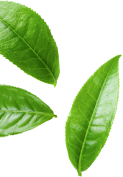



Before we start treating corns, let’s make sure it’s really a corn.
Corns caused by viruses are more common in young people.
Growths due to orthopaedic reasons, however, are more common in the older age group. One type of corns appears as skin growths or thickening in areas of increased pressure. The other type is caused by a viral infection and causes similar symptoms.
Both types appear as gradually shrivelling, painful skin growths.
The growths can range in size from a few millimetres to a centimetre, but it is also possible for several viral warts to “merge” over a larger area.
The first step is to establish that it is not a wart. The two lesions have one thing in common: they both cause thickening of the skin and pressure. The treatment of corns is particularly important if you are higher-weight person or have diabetes, as in these cases the affected area can become ulcerated.
A pus-filled corns is usually a soft corn. They are abrasion-shaped and usually watery. They develop if the skin is rubbed for a long time. These corns can become infected and inflamed quite easily if not treated in time. Grey and yellow coloured corns are called hardened corns. It is a painful thickening of the skin that sometimes has cracks in it.
There are many types of ointments, creams and solutions available to treat corns, but here is a look at the home remedy for corns.
Do not wear tight shoes. Get rid of tight shoes and wear comfortable soft leather shoes instead. Leather shoes are recommended because they adapt to the shape of your feet and do not irritate problematic, diseased skin. They also prove useful in the prevention of corns.
Cotton or soft wool. It can help a lot in the treatment of corns if you keep the diseased toes apart with soft cotton or soft wool pieces.
Corns can be treated on the soles of the feet using home foot baths. Take foot baths several times a day, as this helps to soften the dry skin, making it easier to remove the layers with a pumice stone. A warm chamomile footbath can give results in almost no time during the corns treatment. It is also useful for corns between the toes.
Removal of the corn between the toes
Foot care: start by taking care of your feet regularly, especially around the corns. Use foot baths, emollient creams or oils, and regularly remove dead skin.
Corns patches: special patches are available which are applied to the corn. These patches help to reduce pressure and remove dead skin. Regular use can make the corns smaller and less painful.
Corns creams: there are also creams and ointments that can help soften and soothe corns. These usually contain salicyl or urea, which can help dissolve and remove dead skin.
Medical intervention: If the above methods don’t help, or if the corns are more severe, you may want to seek medical attention. A doctor can treat the corns as a specialist, for example by removing the skin surgically or by other methods.
Orthopaedic shoes or insoles: sometimes wearing the right shoes or insoles can help to reduce pressure and irritation between the toes, thereby relieving the symptoms of corns.
Vitamin E tablets: crush a vitamin E tablet with a little oil, then apply the mixture to the corns overnight and put a sock on your feet.
Lemon: Lemon can also help against corns at home. For this, cut a thin slice of lemon and put it on the corns.
Onions: pour vinegar into a glass jar and add a slice of onion. Leave in a warm place for a full day, then put the onion on the hen’s eye before going to bed. If it’s soft in the morning, you can remove it, but if not, continue the treatment. The use of garlic on corns is not uncommon either. To use it, chop it and put it on the corn. It is worth being aware that it can cause skin irritation!
Bread: soak half a slice of dry bread in apple cider vinegar and fix it to the hen’s eye with a piece of foil. It is worth putting a sock on your feet and wearing it overnight.
Soaking: removing corns at home is made much easier if you soak your feet in warm soapy water for about 10-15 minutes. This helps to soften the skin and makes it easier to treat corns.
Home-made apple cider vinegar for corns: add 1 cup of apple cider vinegar and soap to a bowl of warm water and soak your feet in it for 15 minutes. This will soften the calluses. When you are done with the soaking, apply castor oil on the corns and they will disappear in about 10 days. The acidic substance in the apple cider vinegar can kill the corns. It is also important that the cider vinegar is of good quality. You can achieve great results overnight. After a few days, the corns should disappear completely. If you find corns on the bottom of your feet, you can wrap a cotton wool with apple cider vinegar and put socks on it for the evening.
Bloodroot Swallowgrass or the best corn silk: This may be the best corn silk. If you want to use a herb for hen’s foot, this is the best choice. It is a natural remedy for viral warts and corns. The milk liquid of the plant destroys the viruses that cause the wart but it is also very effective against corns. You can find it in forests or shady meadows. Just break off a piece of the stem and drip the spurting milk liquid onto the corn.
Turmeric is recommended instead. Turmeric is an effective remedy for corns. Thanks to its great anti-inflammatory properties, it reduces unpleasant pain and speeds up the healing of the inflammation. All you need to do is mix 1 tsp of ground turmeric and a little honey and make a thick paste. You need to apply this pulp on the corns and let it sit on them. You can apply it 2-3 times a day and use it for at least 1 week. Another solution is to mix 1 teaspoon of aloe vera gel with half a teaspoon of turmeric. Just put it on your feet, wrap it overnight. The next morning it may even be so effective that you can rub off the dead skin with a pumice stone.
Yes, baking soda can be used to treat corns. Yes, baking soda does help reduce inflammation and pain, as well as remove excess moisture. When applied to corns, baking soda is usually just mixed with a small amount of water and the paste is applied to the corn and then covered with a clean cloth. The treatment should be repeated several times a day until the symptoms disappear completely.
Removing corns at home with tea tree oil is not only possible, but also one of the best solutions for corns. The reason is that tea tree oil has anti-inflammatory and antibacterial properties, which can help reduce corn root inflammation and relieve symptoms. Tea tree oil is usually applied to the corns in a small amount and covered with a clean cloth. The treatment should be applied several times a day until the symptoms disappear completely. When using tea tree oil, it is important to ensure that it is obtained from a clean and quality source.
Treatment of an inflamed corn usually involves a combination of home and medical methods.
Warm water footbaths: soak the inflamed area in warm, salt water or a warm water footbath to help reduce swelling and relieve pain. The warm water will loosen the skin and may help soften the corns.
Corns patches or pads: there are a number of available patches and pads that can relieve pressure and irritation around the corns. There are several pads and pads that may be available to help relieve pain.
Shoes and insoles: make sure you wear the right size and comfortable shoes that don’t put pressure on your feet or cause further irritation in the corns area. Use insoles to help evenly distribute the load on the foot.
Ointments and creams: ointments and creams applied to the affected area, such as those containing salicylic acid, can help soften the skin and remove the corns. However, it is important to use these products only according to the instructions on the packaging and to consult a doctor if you have any concerns.
Medical treatment: in more severe cases, when home treatments do not produce satisfactory results, a doctor should be consulted. For example, the doctor may be able to remove the corns or recommend other more effective treatments.
A great method is to soak your feet in warm water for about 10 minutes. Make sure that the whole surface of the corns is under the water so that they soften.
Then just gently scrub the soft skin with a corner brush. Dip the corner brush or cornerstone into warm water beforehand. Don’t overstretch it or it may bleed.
Then use a moisturiser to soothe the skin. Finally, the use of a plaster is recommended. This will prevent contact with the shoe from causing an infection. So you can treat corns at home.
If you’re thinking of a homemade solution, perhaps apple cider vinegar is one of the best. However, it should also be remembered that these are all tried and tested methods, but it may not be the same for everyone! If you want to be almost sure and as soon as possible, there are various medical devices and liquids that can help!
Treating corns on the ground at home is not much different. However, corns on the soles of the feet can be particularly uncomfortable as they are under constant pressure from wearing footwear and walking. It is therefore important to treat and care for them in time. Proper treatments and precautions can help relieve pain and prevent further discomfort.
Footbaths: corns can also be removed at home by soaking in warm water. It is usually recommended to soak the feet in warm water for 10-15 minutes. This helps soften the skin and relieve pain. If you can, you can make a foot bath with chamomile tea or sea salt.
Removing calluses: after soaking, gently rub off excess skin from the corns with a soft brush, a foot stone or a file. Be careful not to rub too hard so as not to cause injury.
Corn plasters or creams: you can use over-the-counter corn plasters or foot creams to help soften calluses and relieve pain.
Footwear choice: Wear footwear that is comfortable and fits your feet properly. Avoid shoes or sandals that can cause pressure or rubbing in the corns area.
Rest: as much as possible, rest your feet so as not to overload the area of the corns. This may help the healing process.
Medical help: if the corns are severe or painful and home treatment does not give good results, you should seek medical advice. The doctor can help remove the callus and make recommendations for further treatment if necessary.


HillVital balms are your reliable support for an active life, crafted from natural ingredients!